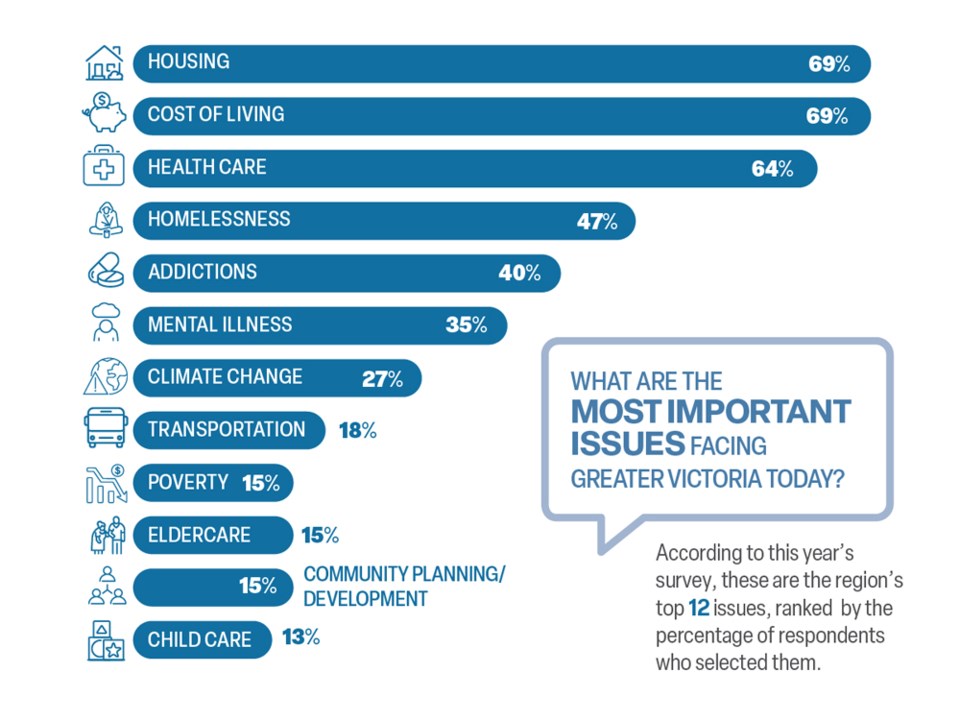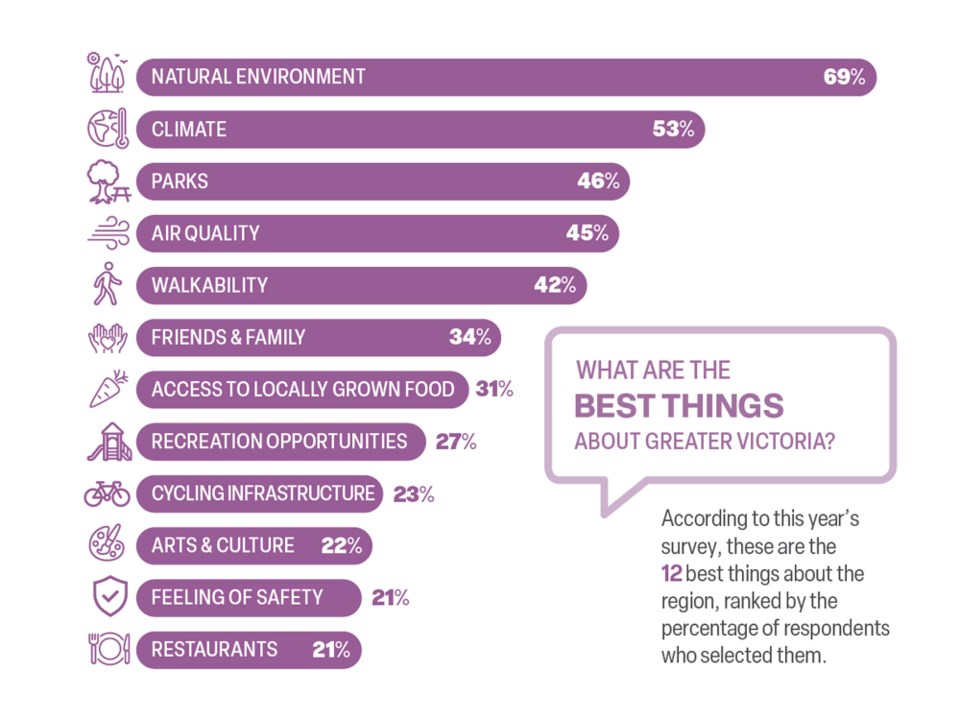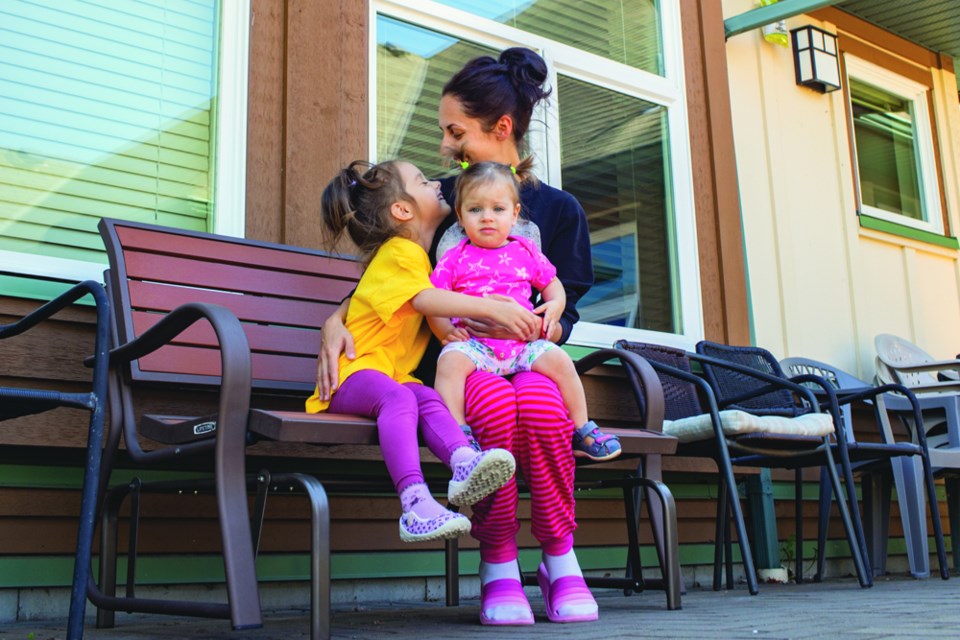Change comes and goes, but a constant across Greater Victoria is community. Victoria’s annual Vital Signs report exists to dive deep and explore what community means to the capital region.
The 2022 edition of Vital Signs, produced by the Victoria Foundation, is out now. This report helps measure the vitality of the region and identify concerns. It supports action on issues critical to the quality of life while connecting philanthropy to community needs and opportunities.
“For 17 years, Vital Signs has provided a check-in on our well-being as a region,” says Sandra Richardson, Victoria Foundation CEO. “The program is a key resource for our community to identify actions that support areas needing attention and to build on our strengths in areas that are working well.”
The report highlights 12 key issue areas for Greater Victoria. A snapshot of the region is illustrated through results from a citizen survey alongside data from the municipal, provincial and federal levels. Each issue area receives a letter grade and features stories from organizations working to better their communities.

Housing has become the first issue area in the history of Vital Signs to receive a letter grade of F, down from a D+ in 2021. The average price for a single-family home in Greater Victoria rose to $1.25 million (May 2022) while the vacancy rate dove to 1% (October 2021), down from 2.2% the prior year. Other letter-grade changes included Economy falling to a C+ from B- and Getting Started rising to a C from a D+. Getting Started is defined as helping children, youth and newcomers to get a good start in life, work, adulthood, and our community making a lasting difference.
Alongside this year’s results, survey participants were asked “What does community mean to you?” While 68% of survey participants said they feel connected to their community in a meaningful way, that means there are still 32% who do not feel connected to their community.
Three leaders in the Greater Victoria community shared their thoughts on what community means to them. The article—featuring Patrick Kelly, Dr. Grace Wong Sneddon and Carly Milloy—can be found on the Vital Victoria Data Hub. Launched in 2021, the platform continues to grow and evolve, with over 70 indicators across many of the issue areas.
“I think a welcoming and healthy community is one where the children are thriving and able to take care of themselves, have fun, enjoy their space,” says Patrick Kelly, Victoria Foundation Indigenous Cultural Advisor and former board chair, member of the Leq’á:mel First Nation (Sto:lo Nation), and former advisor to the Lieutenant Governor of BC. “I look at children as an indicator of the degree to which our community is healthy and doing well.”

Among the most important issues facing Greater Victoria, participants ranked housing (69%), cost of living (69%) and health care (64%) as the top three. The top-ranked features of Greater Victoria were the natural environment, climate and parks.
Read and reflect on what community means to you. Victoria’s 2022 Vital Signs report, presented by Coast Capital, is out now.



